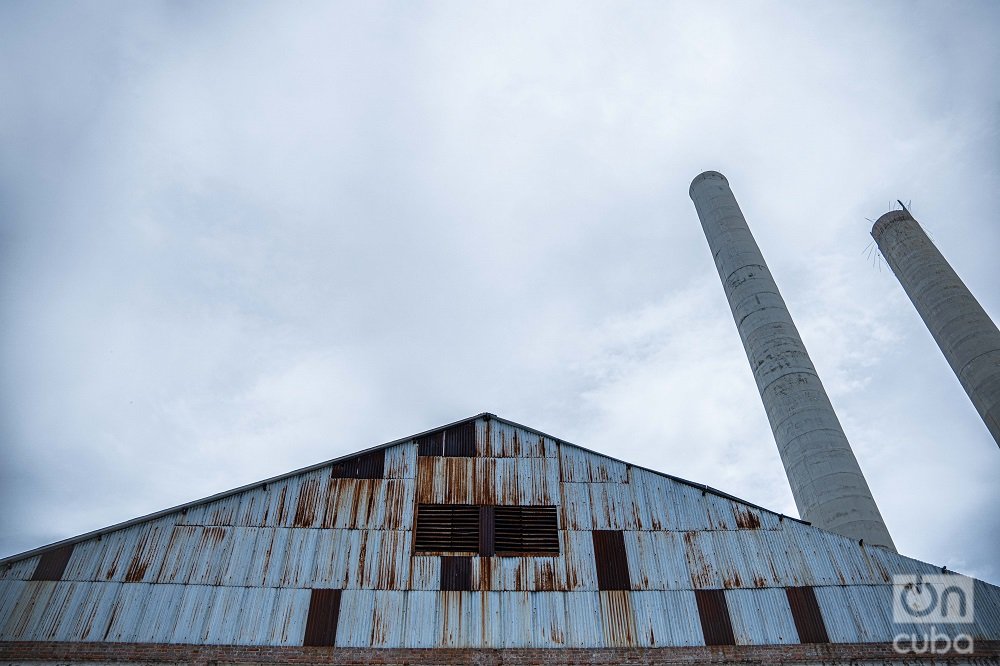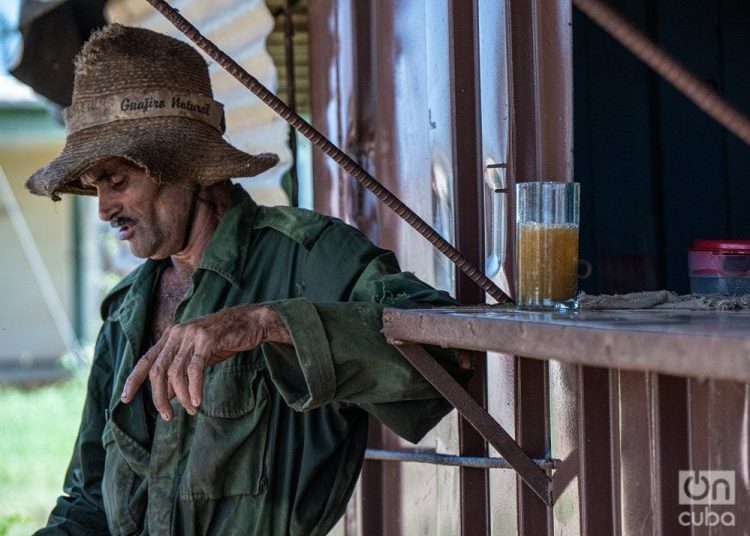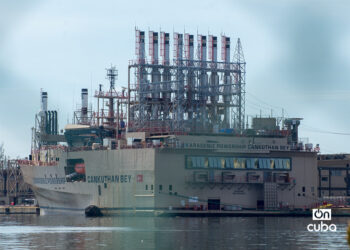From the Artemisa train station, to get to Andorra, you have to get on some small motorbikes similar to those on Línea Street, but handmade. Everyone who got on knew each other, only we (a couple with a 3-year-old child and a teenager) were strangers. From the Camino de las Palmas, if you are not short-sighted, you can see the top of the chimneys. They told us that the end of the section was right at the entrance to the town. We got off the small Cuban-made motorbike and walked, with the sun in front of us and with our diverse expectations. The Camino de las Palmas is not called that, but, on our trips, we started naming the places and the people as if we were the ones who discovered those landscapes.
Crossing the Ceiba Grande, we saw cars entering and leaving sporadically, as an indication that there, in the distance, there is a living town. We got closer, we smelled, saw, felt the density of the air and we knew, the older ones, that this life is survival. The small boy fell asleep in my arms and the 12-year-old stared at the chimneys that rose like dead flags.
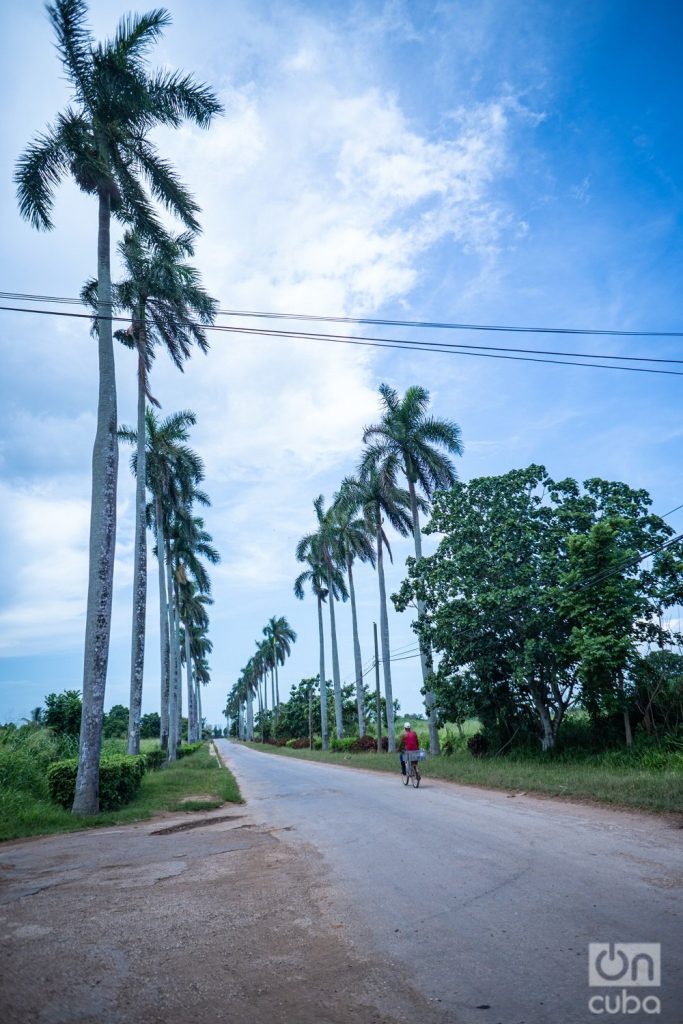
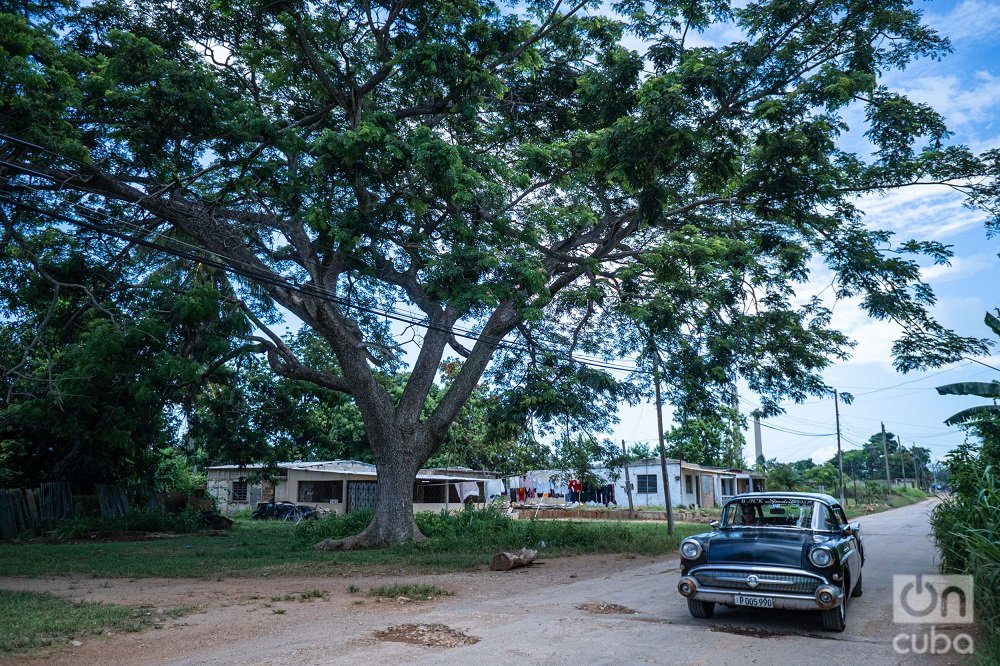
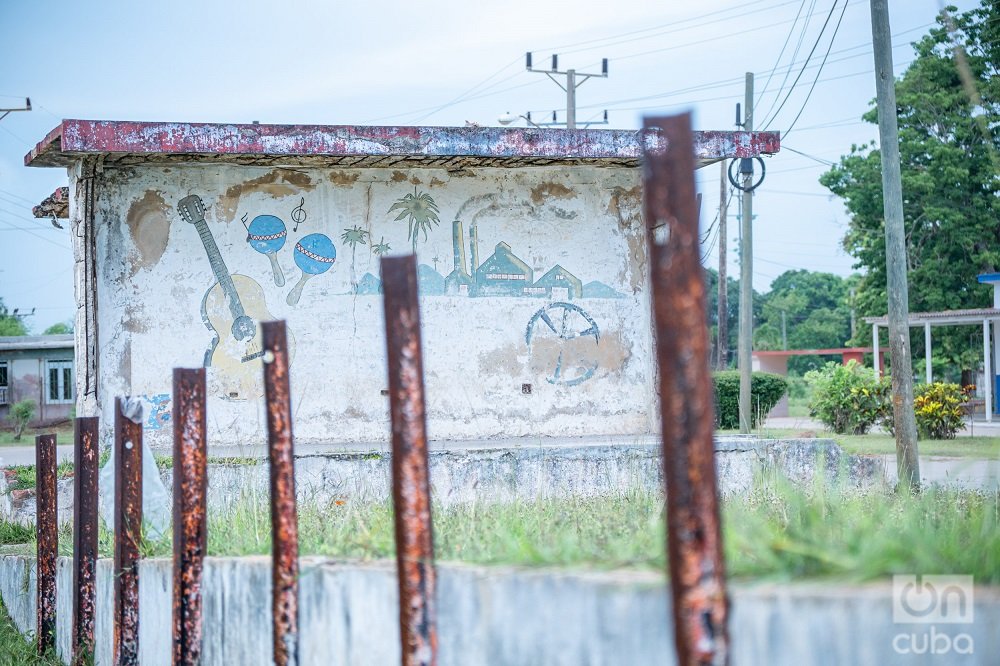
When we were dating, to make me fall in love, he showed me a film by Fernándo Pérez, a song by Kelvis Ochoa and a documentary called DeMoler, by Alejandro Ramírez Anderson. In 2018 we traveled to Guantánamo and visited the Argeo Martínez Sugar Mill, in the municipality of Manuel Tames. It was the only active sugar mill in the province. We took a look at the fascinating journey of sugarcane, from the field to the mill. We met the stoker, a young man who traveled 10 kilometers every day from the city of Guantánamo to the mill to clean the boilers. We talked with other workers who said half with joy and half with regret: “sugarcane is my whole life.” We lived with the townspeople whose smells, sounds, movements and energies came from the sugar mill, its chimney and its locomotive. That experience marked us deeply. Five years later we wanted to take our children to a sugar mill. A sugar mill in ruins.
“Welcome to the Abraham Lincoln Population Settlement.” A faded sign encourages us after the long walk. We arrived in Andorra. Although that name does not appear on the sign, that is what the town was called for a time. And that is what many people still call it, although its first name was Lincoln, after the establishment of the sugar mill in 1917. Later, the town and sugar mill were namesakes of the European tax haven and after its nationalization by the Cuban government it was renamed Abraham Lincoln.
Our first question to one of the residents was about the name change. “You know how things are here, that everything is back and forth, since the time of the Spanish.” He himself, after telling us that he preferred the name Andorra, warned us not to buy sugarcane juice on the corner, because “that is old cane.” For us, who came from Havana and had traveled 60 kilometers by train and then 7 on a handmade small motorbike, that juice for 15 pesos was the wonder of the century. And, indeed, it tasted heavenly. Loaded with the sap from the old cane, we continued our journey, without a map and without a guide, to the sugar mill.
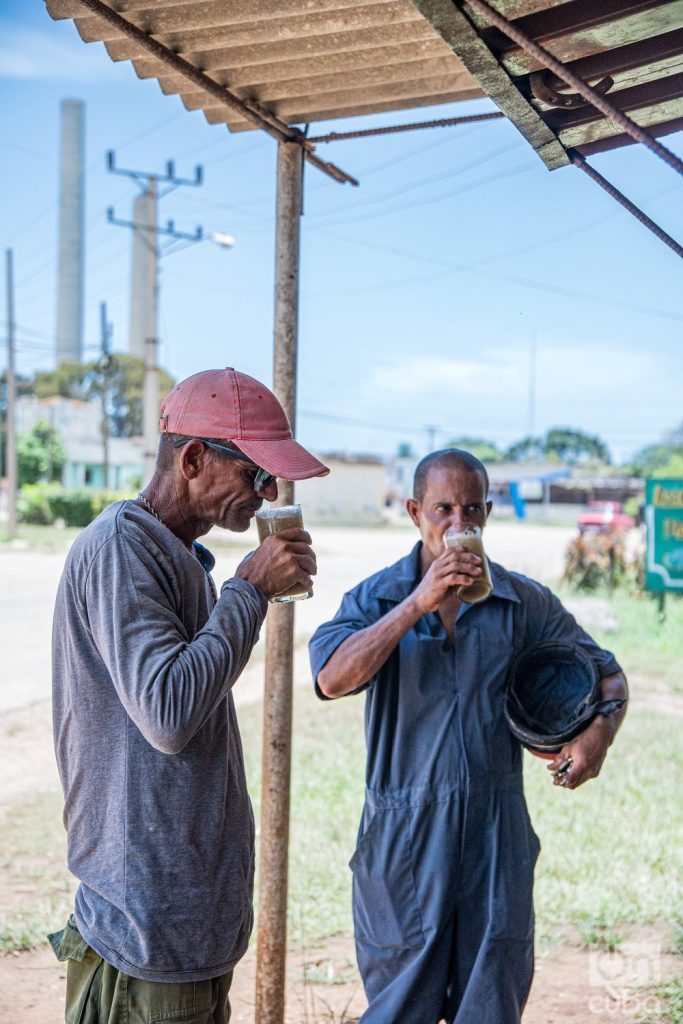
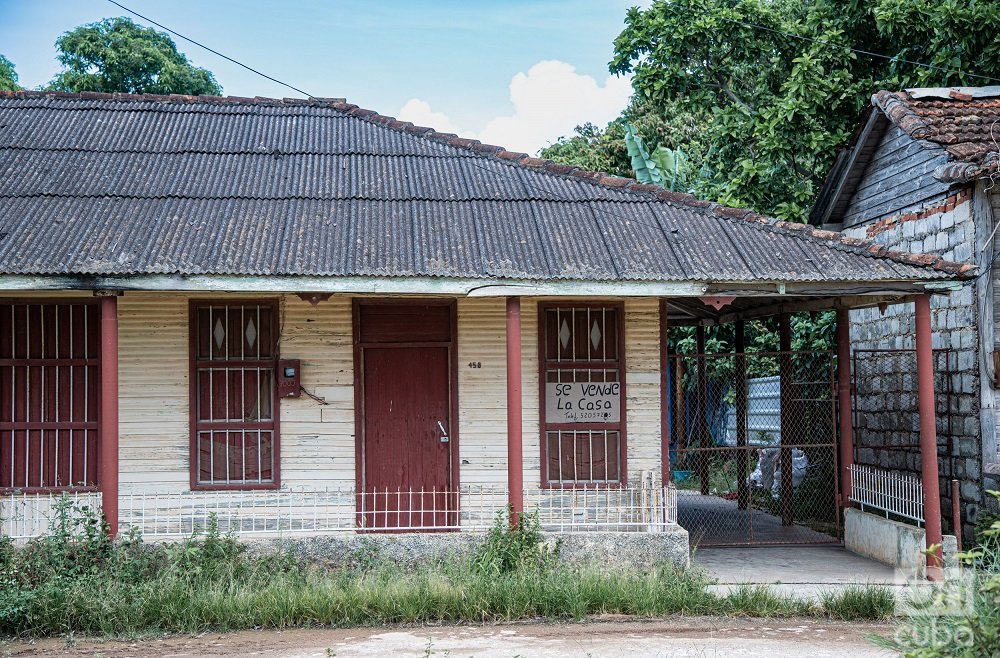
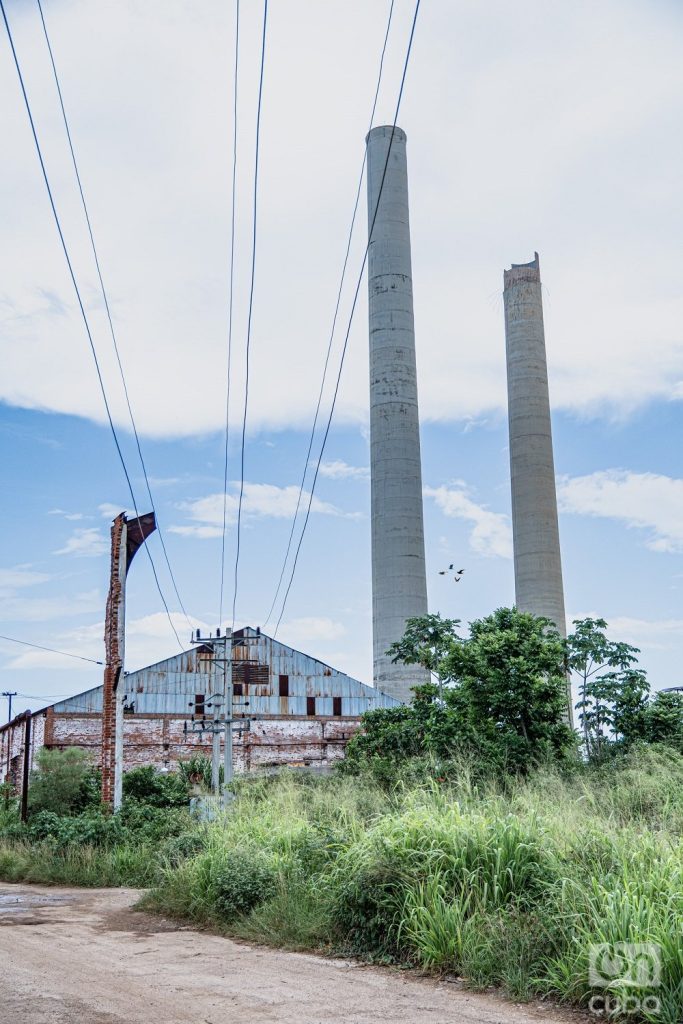
In 200 meters we didn’t bump into anyone. Only a stray dog zigzagged behind us as if noticing the scent of intruders. With each step we took, the sugar mill towers looked bigger and powerful.
We explained to the 12-year-old that Cuba was one of the leaders in sugar production in the world, that cane was very important for the Cuban economy but, above all, it has been important for our culture. I told him that our customs, our way of speaking, our identity, our cuisine, our music, are permeated by sugar. I told him that, in times past, to say “Long live Cuba” they had shouted: “Long live the land that produces cane.”
We played a song by Celia Cruz and continued until the end of La Calle Ancha. Along the way we saw the small amphitheater of the town, which, due to its appearance, preceded us by the abandonment that we would see later. We saw that, in Andorra as in Central Havana, there are cans of imported soft drinks lying on the edges of the street; There are people who sell their house to go to a better place; there are sad faces and happy faces.
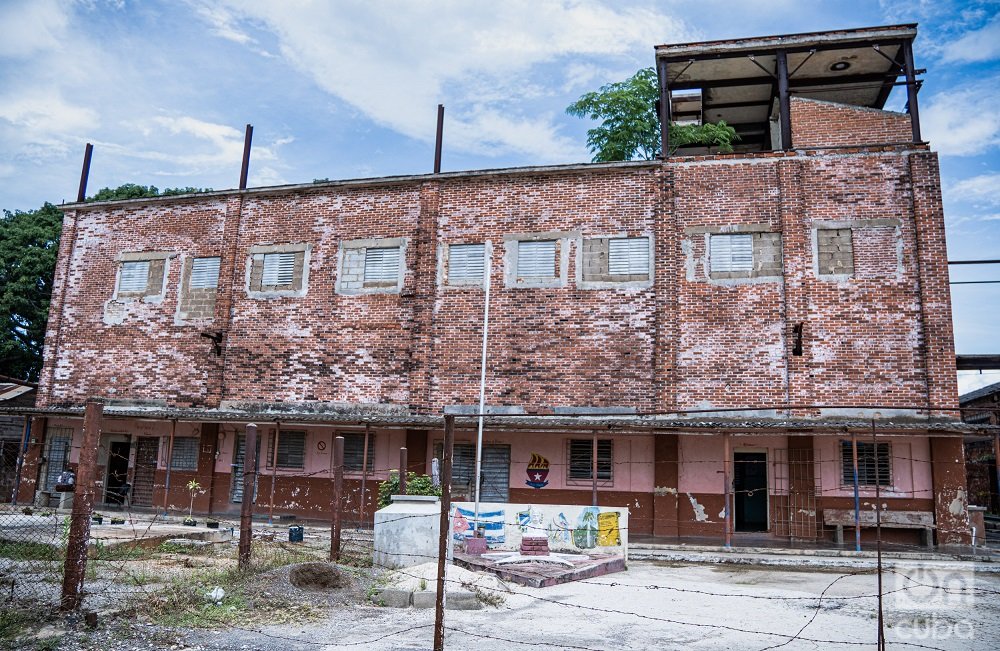
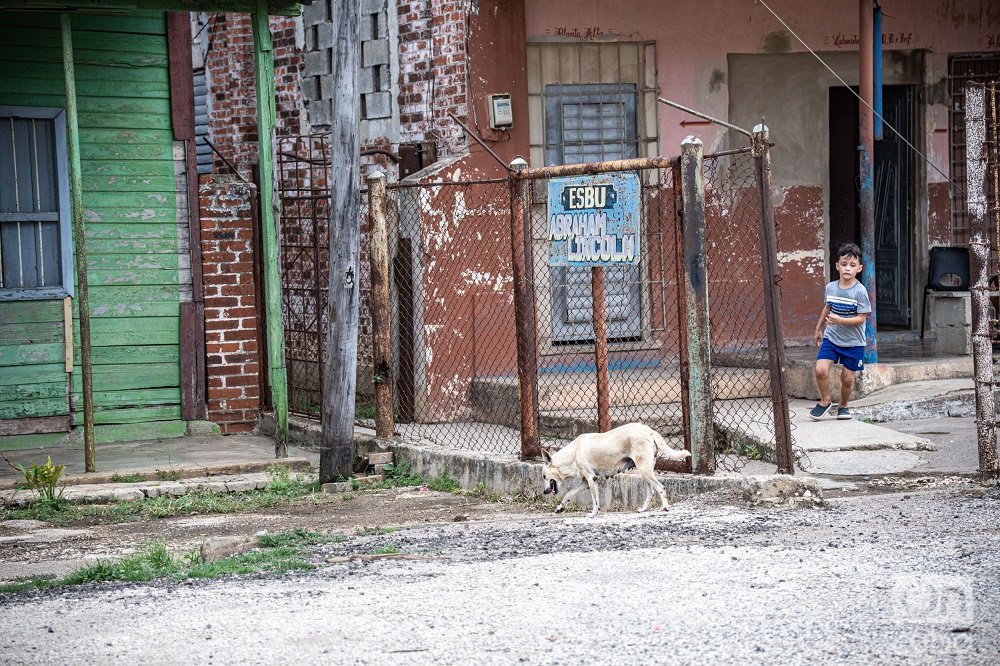
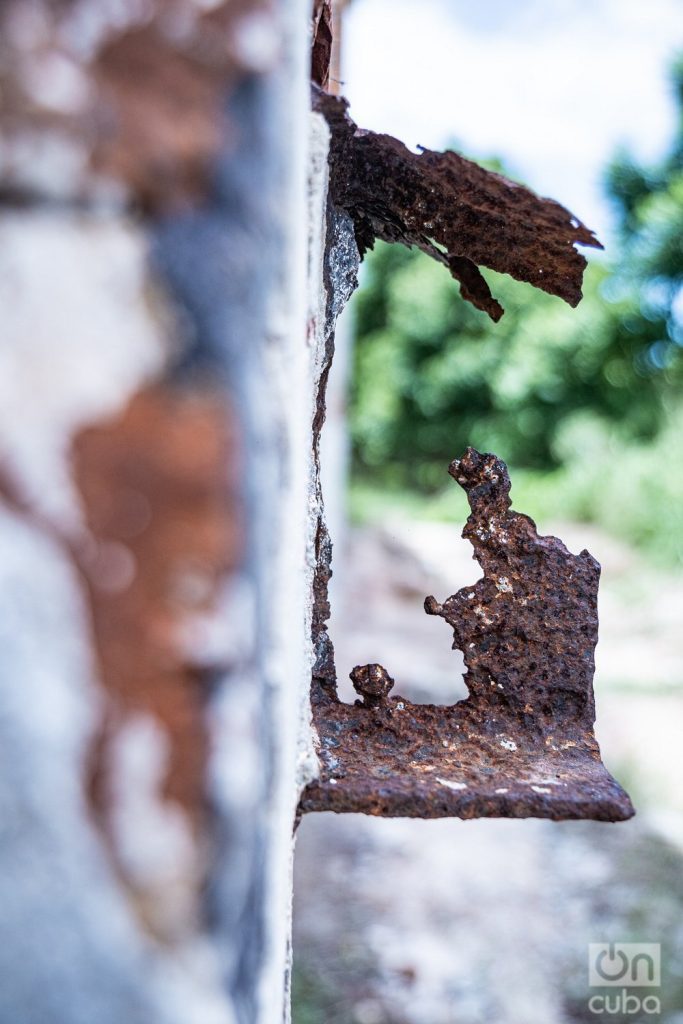
When we finally arrived, we were surprised to find very few structures at the site where we assumed there would be a huge sugar factory in ruins. Only a large warehouse and, a few meters away, the two chimneys that rose from the earth like cold palms. The Old Stevedore seemed to be waiting for us. Sitting astride, with his arms resting on the back of the chair, he saw us arrive and told us: “There is nothing left there, only the holes where the smoke came out of the bagasse house.”
He told us that sugarcane was planted in the surrounding area, but there is hardly any left, because there are no products to add to it. He told us, like someone telling juicy gossip, that that sugar mill belonged to Batista.
His eyes are sad and his waist is tightened by the same wide belt that he wore in the last years of the grinding. “They closed it in 2009. The life of this town changed from one hundred to zero. Before, many cars came in, many things were resolved. Unemployment took hold. There were six hundred or so workers here. And many people were left with nothing to do. Many people left. I didn’t want to leave the towers and I stayed.”
The Old Stevedore looks at the empty spaces and begins to describe them as he remembers them and his memory darkens his face even more. “We filled that container with 300,000 bags. In that small square, up there, the molasses was canned. There was the lathe shop, which they also eliminated. In that bare floor that you see there was a carpentry shop that made anything. You arrived and asked for a door and they sold it to you at the price you could buy it.”



The Young Father abandoned the game just when it was his turn to deliver two balls, because when you play for real, you have to pay. His son and mine started playing with dirt and with a green cart that was missing a wheel. We took advantage of the children’s trust to ask him if he had known the active sugar mill. “No, I never saw it working. This is what remains. People live in the little that remains of the sugar mill. Because, of course…you have to take advantage.”
The old distillery is now the junior high. There are families living in the return rooms, which were formerly structures to take samples of the water returning from the sugar mill.
There are families living in the bases of the turbo generators. The Young Father, with a wife and two children aged 4 years and 6 months, bought a turbo generator to convert into a home. “The place is cyclone proof,” he tells us with a joy that thrills. He came from Alla Abajo, another part of the town where the little houses are made of wood and collapse when it is windy.
A lady who has the same expression of relief on her face bought the neighboring turbo. Little by little she will raise the partitions and put up the windows, meanwhile, she watches her turbo at all hours, lest someone comes to live there. I don’t know how someone sold them something that was a ruin of the sugar mill. A young man, they say. He sold it to them at a good price and they bought. Today they are happier than before.
I don’t understand anything. I’m awestruck. My 12-year-old son tells me that that house is great, that it is made of cement and that those people are better off than us who don’t have our own home. Meanwhile, my little son plays with the Young Father’s son in the turbo under construction.
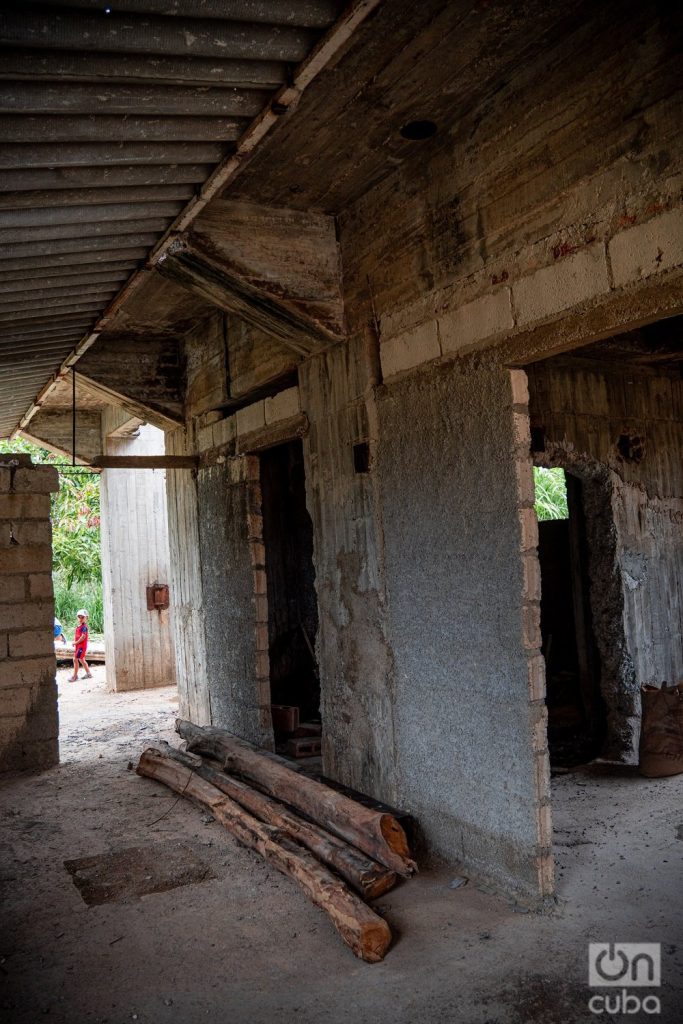
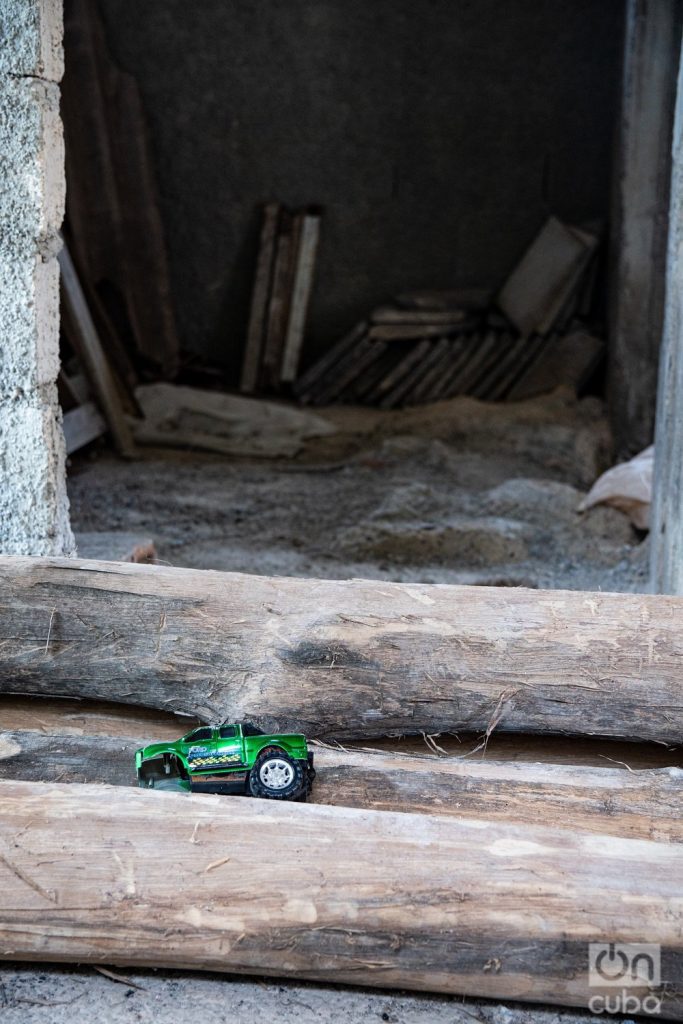
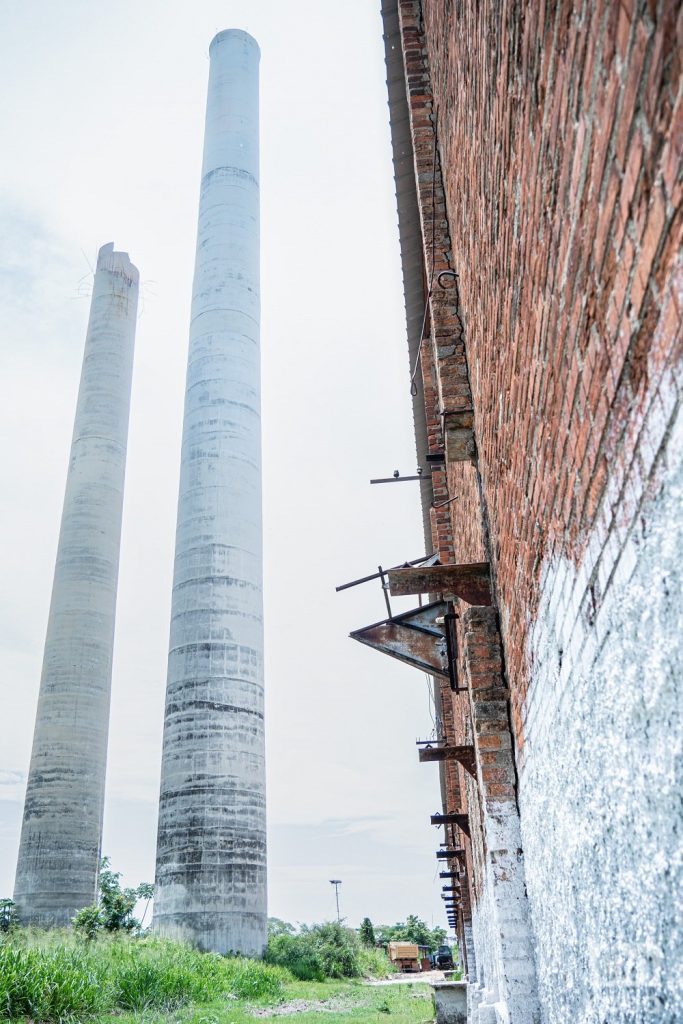
They say you can’t get close to the towers because they are collapsing. The workers at the site gather at the door of a warehouse that is active and stores chemicals for planting tubers and a Russian tractor from the time when the factory milled. The majority were stevedores, sugarcane workers, stokers. The chemists and engineers have left Andorra. I don’t know if it’s because of us or if they have a routine of sitting, like in a sports gathering, watching over the tall towers while they discuss performances and expectations.
“I don’t even remember when they stopped the mill.”
“Boy, that was in 2009.”
“Yes, yes, but remember that it was preserved for about three years, with the story that they were going to start it up again.”
“A year, a whole year passed. Then they took everything away. One engine for Jobabo, another for Las Tunas, another for Holguín, another for I don’t know where…until one day they left it like this, as if the bees had eaten it!”
“The only thing left from that sugar mill here are the Catalinas.”
I asked what the Catalinas were and where they were. They explained to me that they were the toothed wheels that ground the cane and that, since they weighed so much, they couldn’t take them. And they are proud to have, at least, the Catalinas. They are enormous, indestructible, eternal, like the very soul of the sugar mill.
“It grinded well. It made good sugar. It really grinded well!”
“Hey, a lot of things were done here. Raw sugar, refined sugar, absolute alcohol was made and the last thing that came out back there was dry ice.”
“Here we had the largest tank of all Cuba’s sugar mills: the million-ton ones.”
“The best sugar in all of Cuba was ground here!”
“This one here was one of the last ones that was knocked down.”
“I went through all the ones in this area: El Pilar, El Habana Libre, Sandino, Orozco, El Martí…and they all disappeared in thin air.”
“The Camilo was an animal!”
“And the Héctor Molina is big too, this warehouse fits in Héctor Molina’s belly and it has plenty of room to spare!”
“Yes, yes, yes, whatever you say, but the best white sugar in all of Cuba was made here.”
I listened to the conversation and saw how they were getting excited, as if they were arguing about a ballgame. As if the Sugar Men of other sugar mills did not believe the same about theirs. Sense of belonging to something that does not exist. That sugar past had to be beautiful to be so present.
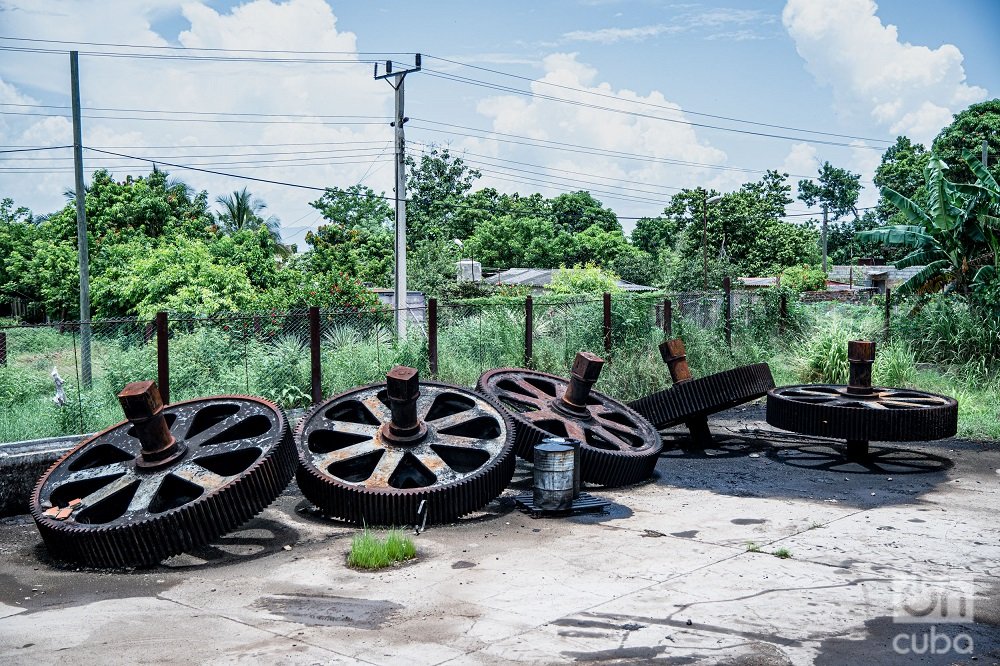
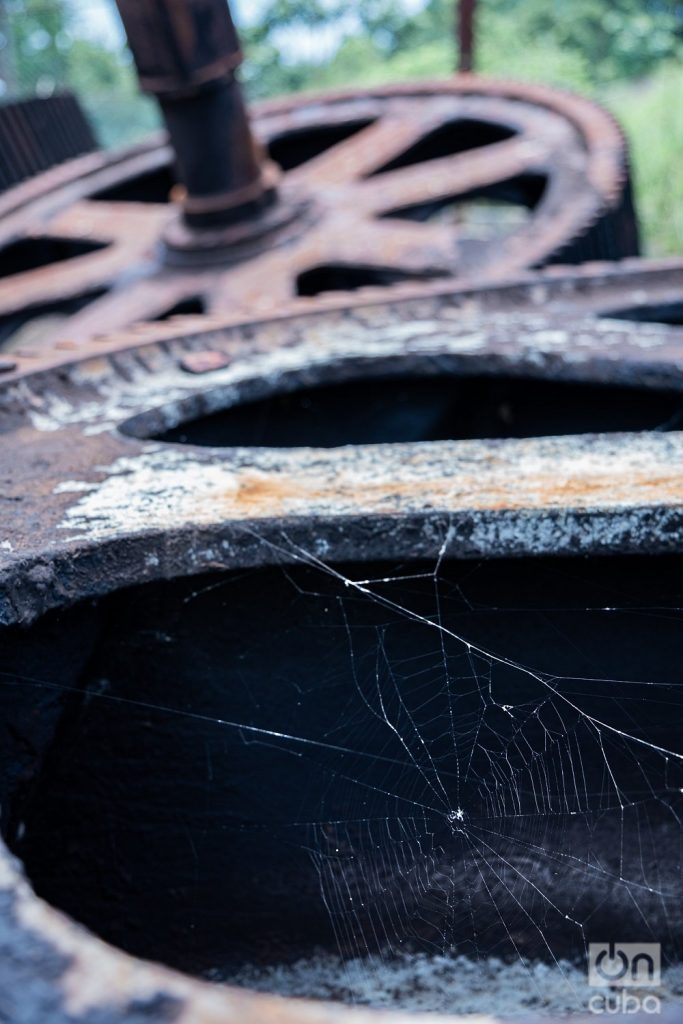
The Old Stevedore did not ask us if we were journalists nor was he amazed at the way our little son played with the other children of the turbo generator. The Young Father asked us how things were in Havana and told us that a cousin of his lived in Alamar. The Old Stevedore is very talkative, we started talking about the Álvaro Reinoso Task and ended up talking about the Reorganization Task. I saw no hope in his eyes nor strength in his hands.
The Young Father has tattoos and a wristwatch that doesn’t work. He is proud of his windows and his strong walls. He lives happily with his family between a sewage pit and the drinking water basin. I say that it is drinkable. I don’t know, although my two children enjoyed it and drank to their hearts’ content. The Vigilante Lady will continue guarding her turbo and hoarding materials to make her little house. Our little boy did not want to leave and the Young Father’s son gave him his green cart without wheels, so that he would remember his little friend from Andorra. My other son, after listening to all the stories about “The Sugar Men,” told me: “Wow, now I understand that saying that whoever has a friend has a sugar mill.”
When we were leaving, The Sugar Men were still arguing about which of the sugar mill was the best, the biggest, the prettiest. In the background, as if a stage director had decided, a Mexican folk song by Antonio Aguilar was playing.
When you are bidding me farewell
With the last goodbye to this world
Don’t cry for me because no one is eternal
Nobody comes back from the deep sleep.
You will suffer, you will cry
While you get used to losing
Then you will resign yourself
When you no longer see me again.
